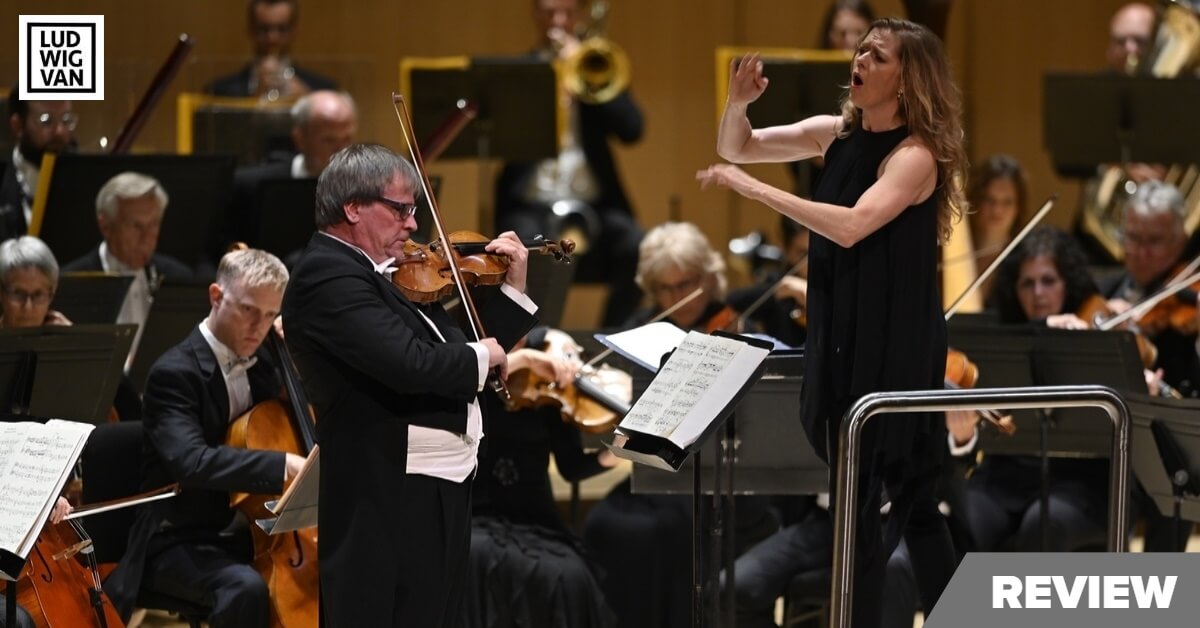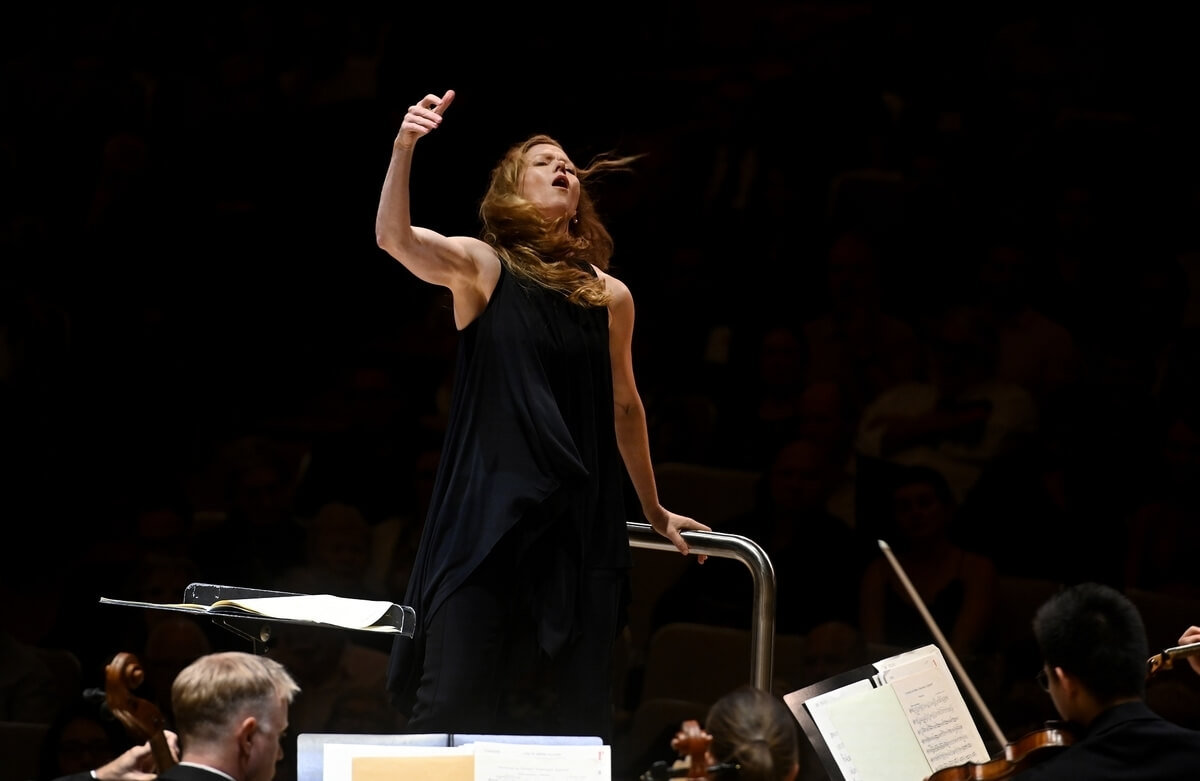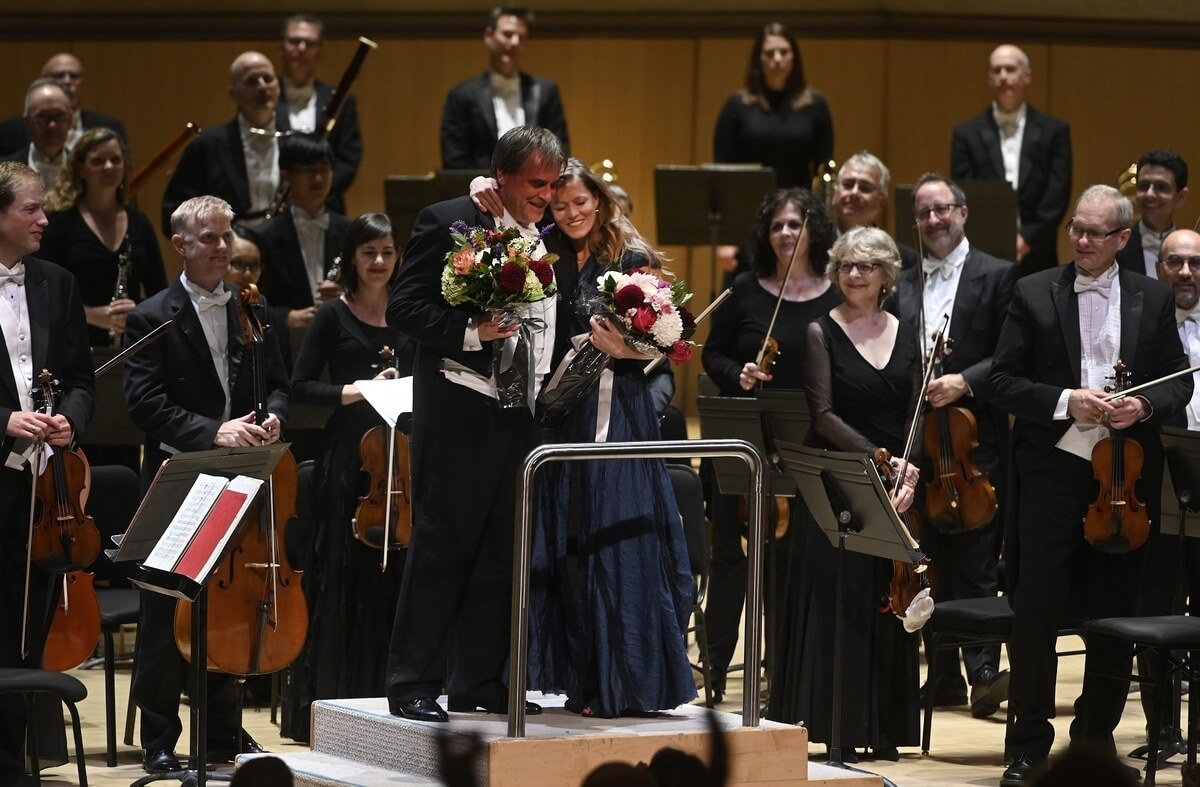
Beethoven: Overture to Egmont; Dutilleux: Sur le même accord for Violin and Orchestra; Haydn: Symphony No. 96 “Miracle”; Brett Dean: And once I played Ophelia for String Orchestra and Soprano (Canadian Première); Sibelius: Symphony No. 3. John Storgårds, conductor & violin; Barbara Hannigan, conductor & soprano, Toronto Symphony Orchestra. Roy Thomson Hall, 8 p.m., Sept. 19, 2019.
There is nothing quite like the atmosphere of anticipation which can greet a symphony orchestra’s new concert season. The Toronto Symphony Orchestra launched its 2019-2020 classical concert series Thursday night and, to cut to the heart of it, the concert was sterling in every way — an unqualified success.
But the start of a new concert season can also bring fresh speculations about a symphony orchestra in an era of fiscal uncertainties. How will the orchestra carry out its public mandate to serve with timely new works and commissions appropriately blended together with the classical repertoire greats?
And of course, the ever-important question looms: how will the TSO’s new publicity machine persuade new ticket buyers to come and partake in these great performances from one of the finest arts organizations in Canada? And finally, how will the orchestra respond for its first full season under the baton of new resident conductor Gustavo Gimeno? There is much excitement and anticipation indeed about this season as the TSO stretches itself into newer publicity climates, and we await the results eagerly in what should prove to be a long-term plan that requires patience from all of us, especially TSO Chief Executive Officer Matthew Loden, who has the ship pointed in the right direction.
For now, there was a lot to take in opening night and there to emphasize with an auspicious testimony to the TSO making all the right moves from the start were conducting dynamic-duo Barbara Hannigan and John Storgårds, selected to give the TSO faithful an inaugural evening of superb music-making that bodes well for another supremely interesting and musically inspired season.
And inspired was the word last night which aptly summarized the conducting and the orchestra’s overall playing. The result was a long and sumptuous musical mural etched and brushed over a diversely stroked palette.
The concert’s two halves were shared equitably well by Hannigan who conducted Beethoven’s Overture to Egmont, Op. 84, Dutilleux’s translucent Sur le même accord: Nocturne for Violin and Orchestra and Haydn’s Symphony No. 96 (Miracle). Storgårds helmed the concert’s second half with the Canadian première of And once I played Ophelia by Brett Dean and finished off the evening’s festive exposition with an intelligent and thoughtful Sibelius Symphony No. 3.
Equally remarkable were the solo stints each conductor took, Hannigan conducting Storgårds as violin soloist in the Dutilleux, and Storgårds returning the favour to lead Dean’s remarkable composition, featuring a stunning and accomplished Hannigan in one of the most virtuoso contemporary works I have ever seen her perform.
The mutual musical exchange between these remarkably considered performers strengthened the evening’s overall interpretive entente and seemed to feed the orchestra with even more inspiration in what seemed as much like an eclectic recital as a meeting of minds. Everything was choreographed ably well right from the start, beginning with Hannigan’s leading of the audience in O Canada to the final inspiring chords of Sibelius’ Third.
The themes of consistent music making remained unbroken throughout the evening. Focused, clear conducting and intelligent direction, transparency of line and melodic arc, unwaveringly articulate story-telling and best of all, harmonic clarity, architecturalized an enviable emotional scope that we don’t get to hear on a chord-by-chord level in other top-ranked orchestras.

Two cases reflecting this were Hannigan’s astute undertakings of Beethoven’s Egmont Overture and Haydn’s Miracle Symphony. While keeping tempi relatively constant, she opted consistently for clean lines, stylistic accuracy, transparent wind textures with a premium on sparking an ebullient, if not outright theatrical music making — this is the very acme of Haydn interpretation.
With the Egmont Overture Hannigan placed the emphasis on focused, unified string sonority, loud brass the way Beethoven asks for it in his score, and finally, like the Haydn symphony, a strong sense of what a theme means in musical terms and how to get that across to the audience. There was never a moment’s lazy phrasing with the TSO; everything conceptual was consummately understood and delivered.
In the Haydn Symphony, she transmitted a clear and forthright grasp of eighteenth-Century dramatic contrasts. The “Minuet” was the best I had ever heard that piece played, including a resplendent solo oboe in the “Trio”, and following it was a witty and concise finale as only Haydn could write it, complete with piquant colours in winds, horns and timpani. Hannigan just gets this music.
And the audience gets this completely too, and probably wants more. It’s telling when around two dozen patrons, in a mere two sections of the mezzanine alone, were busy reading their program notes on Haydn during the performance, which shows how little Haydn is played here these days and in most orchestras. Yet, we need to hear more of his later 20 symphonies because there is so much to learn from these performances and so much to enjoy, especially in how Hannigan conducts.
The contemporary pieces offered similar insights into how easily the TSO plays this repertoire. Barbara Hannigan herself has premiered or conducted dozens of new works in her career, and here she showed her complete comfort with Dutilleux’s Sur le même accord, navigating its narrative complexity and switching gears at every section with ease. Essentially a riff on one chord, i.e., the six notes orchestras tune up to, there is a demand on the conductor to grasp closely the many symphonic languages Dutilleux uses throughout his nocturne cast in variation form, ranging from direct textural quotations from Schoenberg’s Five Pieces for Orchestra to Lutoslawski’s early orchestral works. There are shimmering moments of spectral calm and obstreperous variations of colourful clatter interwoven magically by Storgårds’ commanding violin playing. I relished this piece equally with all the others and especially Hannigan’s comfort and skill directing the orchestra through this challenging piece.
Continuing along these lines in the second half was Brett Dean and Matthew Jocelyn’s And once I played Ophelia for String Orchestra and Soprano, premiered Thursday night in its new arrangement for string orchestra. Ophelia tropes on Shakespearean snippets taken from Hamlet, consisting predictably of interior monologues and rich ideas of madness-monodrama, allowing Hannigan, now soloist and Storgårds, now conductor, to team up again in creating a ravishing première that was enthusiastically received. Hannigan’s voice carried the evening: the audience stood for her and rightly — they were simply awed.
There are many precedents for this work ranging from Peter Maxwell Davies’ Eight Songs for a Mad King and George Crumb’s mid-career vocalise works, plus many more idiosyncratic to the vocal style and language. In a case such as Dean’s Ophelia, it is delightful and impressive to enjoy a work that can still be completely original, and awe-inspiring in its virtuosic, emotional and musical breadth, while adding psychological insight in both a literary and musical idiom, thanks to Jocelyn’s superior libretto which emboldens an archetypal stage character to a very different level of independence. For Ophelia, who has been written about time and again, (see Jonathan Posthuma’s successful 2012 premiere Songs for Ophelia as one example), this performance was a clear breakthrough of a composition that needs to be performed many more times for it to settle and take its deserved place in many orchestras’ permanent repertoire.

To end, Storgårds capped off the lengthy evening with a pensive and compelling Sibelius Three, the likes of which one typically does not find very often live or on recordings.
At its first peformance, Sibelius’ Third baffled audiences and critics. Everyone today sees it as a taut, Classically-modeled work, essentially the departure into new creative territory that liberated Sibelius from the effusive Romantic past of his two previous symphonies. When Prokofiev heard the work soon after its première, it undeniably inspired his Classical Symphony.
But, one can also imagine it as a new way to write a symphony based on one motive and sustain it in fragmentary chords, melodies and phrases throughout. Conductors do not often succeed at making this work. They tend to focus on sonority and style rather than structure and substance. As a result, we get pleasant sounds, but no story.
Storgårds gives you the story and the whole picture too. Last night was a beautiful demonstration of how to play Sibelius and I can’t wait to see him come back and give us more. In this version of Sibelius’ world, we are treated to a subtle landscape of hues and gestures, unified into a broader palette that suddenly made eloquent programming sense with the rest of the evening’s works and how well they were executed too. This is a Sibelius you shouldn’t miss.
One last note: the orchestra sat in European formation, with violins split left/right and cellos centre to left of the conductor, double basses left, behind first violins. The acoustic warmed to this seating arrangement and the TSO sounded consummately balanced. I wish it could be like this all the time in Roy Thomson Hall.
#LUDWIGVAN
Want more updates on classical music and opera news and reviews? Follow us on Facebook, Instagram or Twitter for all the latest.
- SCRUTINY | Opera Atelier’s Film Of Handel’s ‘The Resurrection’ A Stylish And Dramatic Triumph - May 28, 2021
- HOT TAKE | James Ehnes And Stewart Goodyear Set The Virtual Standard For Beethoven 250 - December 15, 2020
- SCRUTINY | Against the Grain’s ‘Messiah/Complex’ Finds A Radical Strength - December 14, 2020



